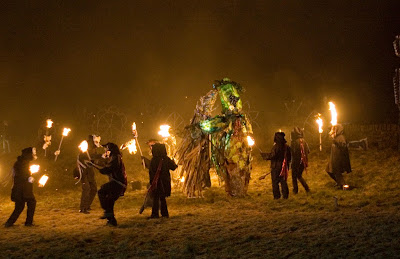Standish O'Grady - Father of the Celtic Revival
Written by Ben Kesp
Several years ago I had started research into the Irish Pantheon of Gods - The Dagda, the supreme god of the pantheon represented as a figure of power; the Morrígan, tripartite battle goddess, who could take many forms and often compared to other indo European goddesses like the Kali in the Hindu Pantheon and the Valkyries in the Norse Pantheon; Lúgh/Lug, represented as a young man associated with light, sun and summer - a sun god and the list of the Irish gods goes on. Recently again, my interest was reawakened in Irish mythology with the stories associated with Cu Chulainn, a powerful and legendary warrior - half god - half man and the mighty legendary queen of Connaught - Queen Meave.
A trilogy of beautiful stories tells us the story of Cu Chulainn and of his battles with Queen Maeve, the daughter of Eochaid Feidlech, the High King of Ireland. The books written by Irish author Standish O’Grady are “The Coming of Cu Chulainn” (1894), “In the Gates of the North” (1901) and “The Triumph and Passing of Cu Chulainn” (1920). The first time I had heard of Standish O’Grady was in 2001 when these books were discovered in Victorian and Steamer travel trunks in my ancestral home. The books once were displayed proudly in large oak bookcases before they were banished to a dark and dusty storeroom in which they did not see the light of day for over forty years.
Standish James O'Grady, a historical novelist, and literary historian was born on the 18th of September, 1846 in Castletown, County Cork, where his father was Church of Ireland rector. Standish was educated in Tipperary Grammar School and graduated from Trinity College, Dublin in 1868 as a barrister. He was introduced to the ancient and romantic literature of Ireland through Sylvestor O'Halloran's, "An Introduction to the Study of the History and Antiquities of Ireland".
O’Grady began investigating Irish mythology and legendary histories and he published the “History of Ireland” containing four novels which had a huge effect on young writers including W.B. Yeats.
O'Grady went on to write many historical novels reintroducing Irish Legends in literacy form like “Finn and his Companions” (1891), “The Chain of Gold” (1895), “Ulrick the Ready” (1896), “Flight of the Eagle” (1897) and “The Departure of Dermot” (1913), “The Coming of Cu Chulainn” in 1894 was the first part of a trilogy which was followed by “In the Gates of the North” (1901) and “The triumph and Passing of Cu Chulainn” (1920).
O’Grady’s works over his life time led him to be known as the “Father of the Celtic Revival” which would lead to the Irish Literary Renaissance. He also studied Irish history from the Elizabethan period and wrote many works, some of which were criticised for example “The Flight of the Eagle” where he argued on his belief that a closer union between England and Ireland was necessary.
O’Grady married Margaret Fisher and had three sons. He died on the 18th of May 1928 in the Isle of Wight, England.
The books that he has written are a national treasure and are encouraged to be read and cherished, which detail part of the four great cycles of early Irish literary Mythology; Mythological Cycle, The Ulster Cycle, The Fenian Cycle and Historical Cycle (Cycle of the Kings).





Comments
Post a Comment